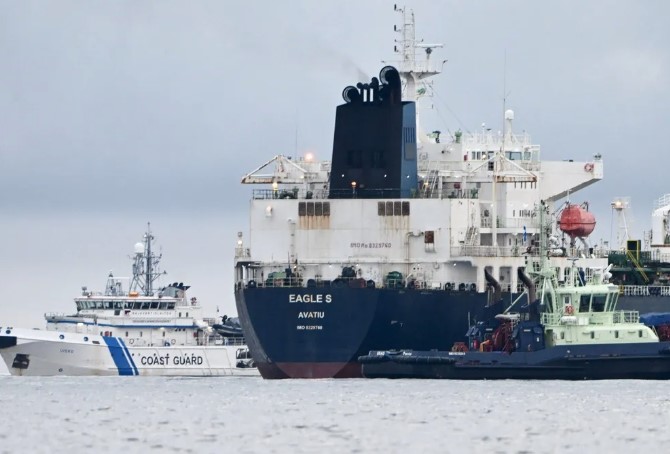Finland has brought formal charges against the captain and two senior crew members of a Russian-linked oil tanker, and officials are describing it as NATO’s first criminal case over Baltic Sea sabotage. Authorities announced the case on August 11, 2025, and it has quickly drawn attention across Europe.
Finland Opens Criminal Case Over Baltic Sea Sabotage
The oil tanker, named Eagle S, is accused of causing significant damage to important infrastructure in December 2024. Finnish authorities say the vessel dragged its anchor for almost 100 kilometers, cutting through five electricity and telecommunications cables that connect NATO countries. These cables are critical for carrying both electricity and internet data between nations, making the damage a major incident.
The tanker, registered under the Cook Islands flag, was carrying oil from Russia to Egypt at the time. The Eagle S was intercepted by Finnish coastguard forces in a dramatic operation involving special border guard units. These teams even abseiled from a helicopter onto the moving vessel to secure control.
Swedish Undersea Cable Targeted! Suspected Sabotage Sparks Baltic Sea Security Crisis
Crew Denies Role in Baltic Sea Sabotage
The three crew members charged are nationals of Georgia and India. Finnish prosecutors accuse them of aggravated vandalism and aggravated interference with telecommunications. Under Finnish law, these charges carry a possible prison sentence of up to 13 years.
Authorities initially detained the crew members but later released them under strict conditions, including a requirement to stay in Finland while the legal process continues. They firmly deny all wrongdoing. Their legal defense argues that the damage took place in international waters, meaning Finland should not have jurisdiction over the case.
Baltic Sea on High Alert: Sweden Orders Ship Crackdown to Crush Kremlin’s Sanctions Evasion
Observers have given the Eagle S special attention because they consider it part of Russia’s so-called “shadow fleet.” This term refers to ships that transport Russian oil using complex ownership structures and without Western insurance, often in an effort to avoid sanctions. In May 2025, the European Union officially added the Eagle S to its sanctions list.
Even though the investigation was ongoing, Finnish authorities allowed the tanker to leave port in March 2025. Now, however, the case has become the first criminal prosecution in a NATO country related to suspected Baltic Sea sabotage.
Wider Baltic Sea Security Concerns
This legal action comes amid a growing list of suspicious incidents involving Baltic Sea sabotage in recent years. In November 2024, authorities accused a Chinese vessel named Yi Peng 3 of cutting two cables, but the ship refused inspection requests from Swedish authorities and left the area.
Such incidents cause serious consequences. In this case, Finnish investigators escorted the Eagle S to the port of Porvoo for a detailed technical inspection. They examined whether the vessel had damaged the Estlink 2 undersea power cable and other submarine systems. Estlink 2 is a major energy connection between Finland and Estonia, and any disruption can cause power supply problems in both countries.
Some politicians in the Baltic region suspect that certain cases of Baltic Sea sabotage could be part of a coordinated effort to disrupt NATO’s infrastructure. Others believe the incidents may be linked to poor seamanship, mechanical problems, or inadequate ship maintenance.
Swedish Undersea Cable Targeted! Suspected Sabotage Sparks Baltic Sea Security Crisis
The Baltic Sea is one of the busiest maritime areas in Europe. It is filled with a network of cables, pipelines, and shipping routes that are vital to regional economies and communications. Damage to these underwater systems can be expensive to repair and can cause lasting service interruptions.
The Eagle S case is particularly significant because proving responsibility for undersea damage in international waters is complex. Investigators must rely on technical data, ship tracking information, and physical evidence from the damaged infrastructure.
For now, the prosecution in Finland marks a rare moment where allegations of Baltic Sea sabotage have moved beyond suspicion and into a formal criminal trial. The case is being closely monitored by NATO members, European governments, and maritime security experts.

